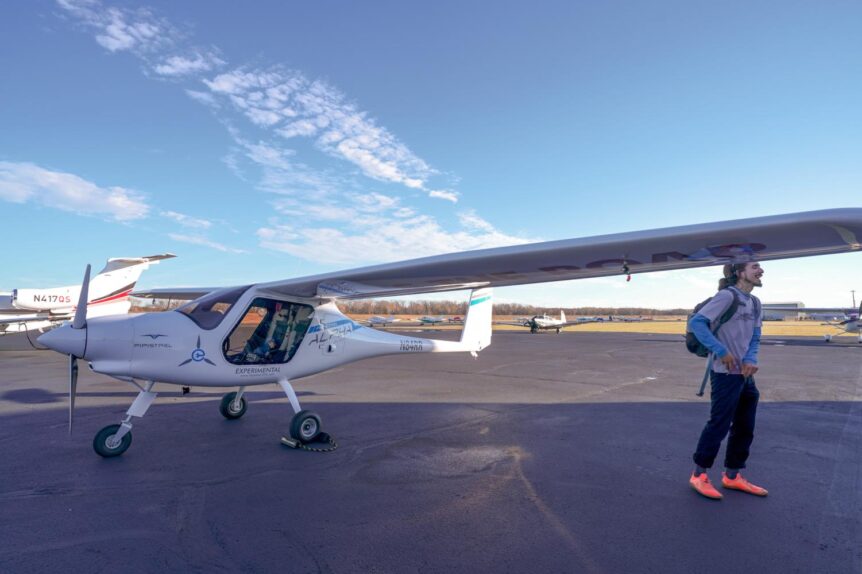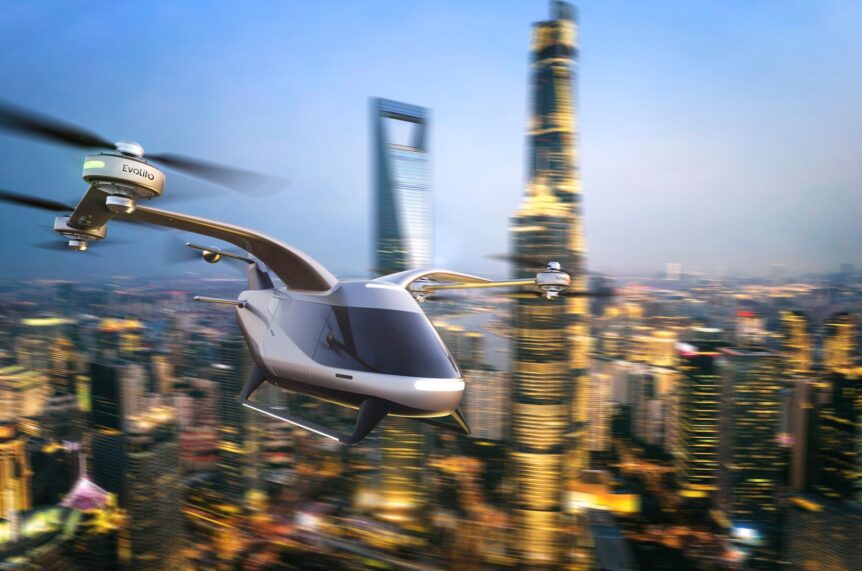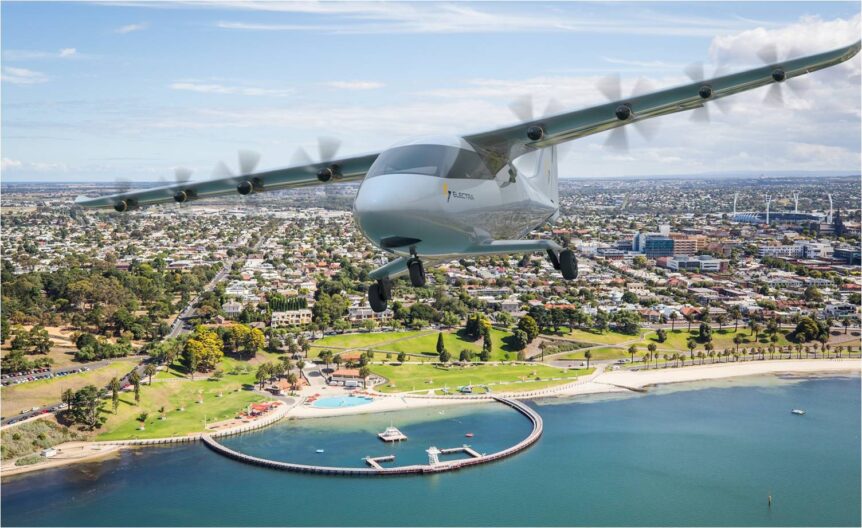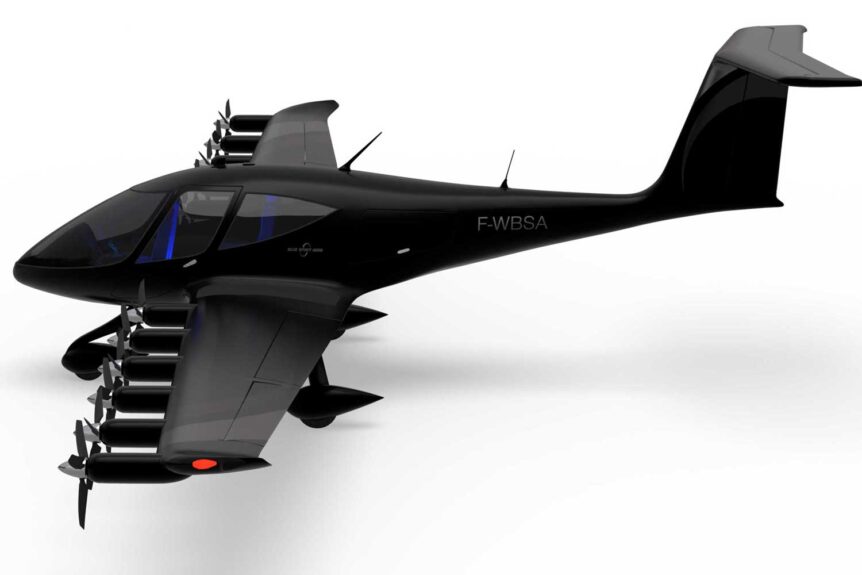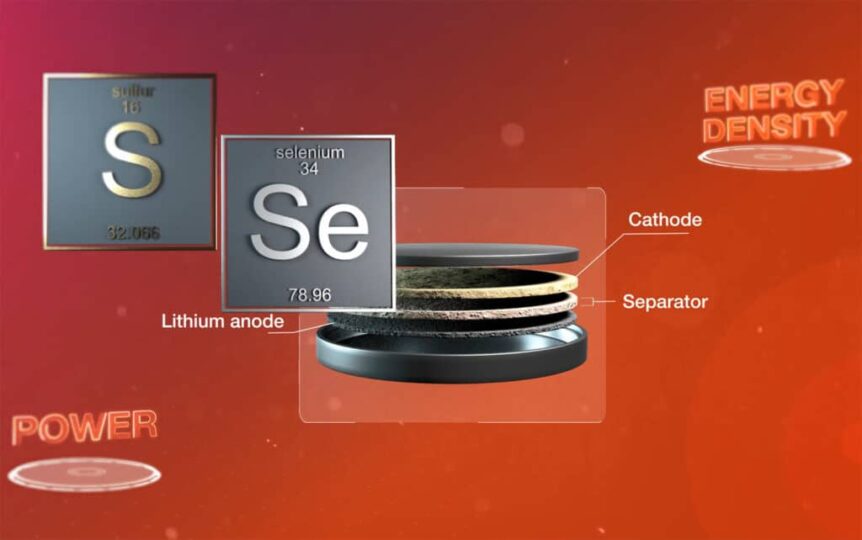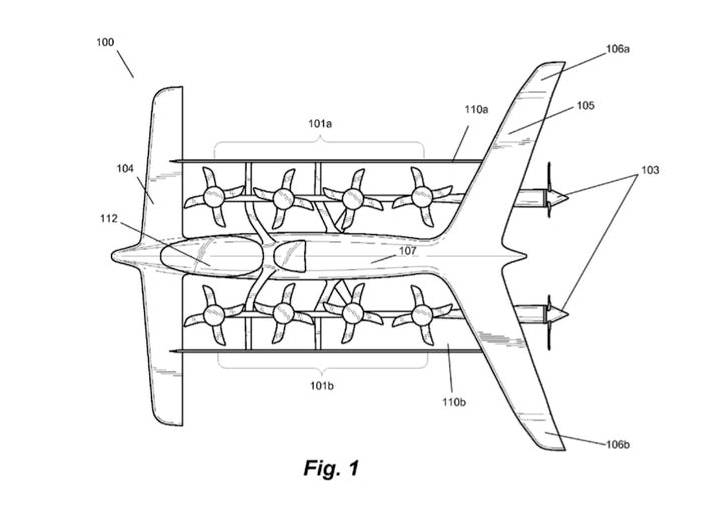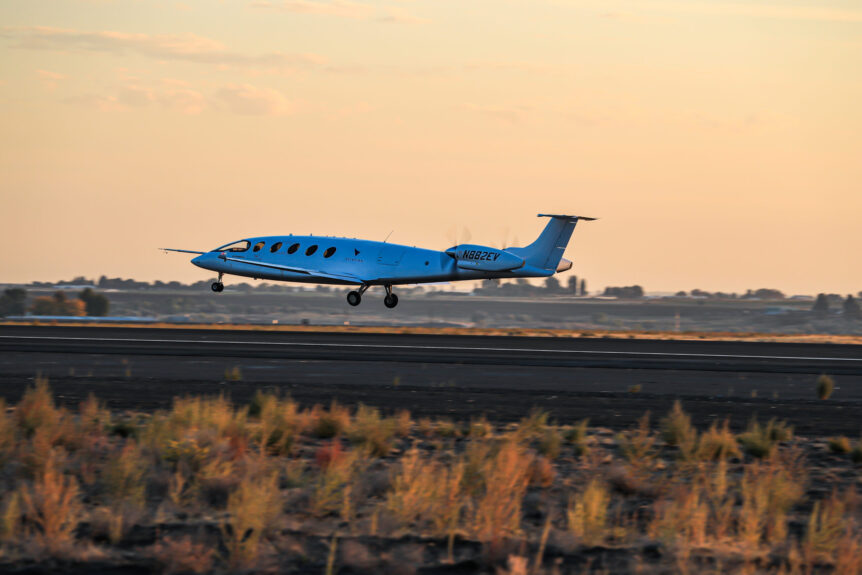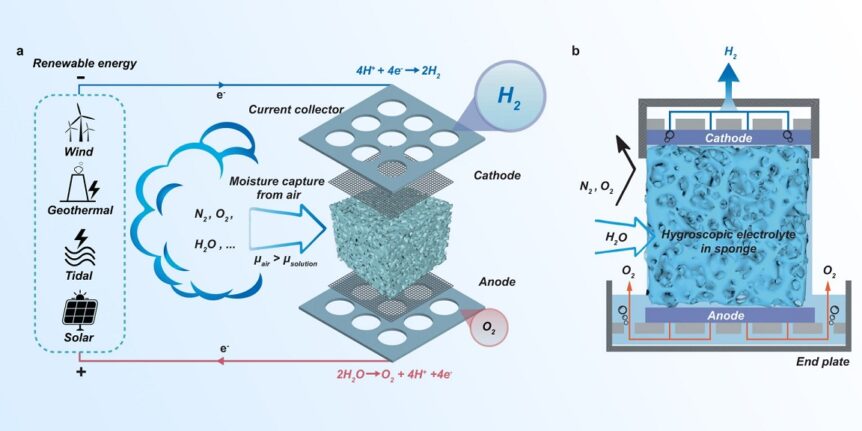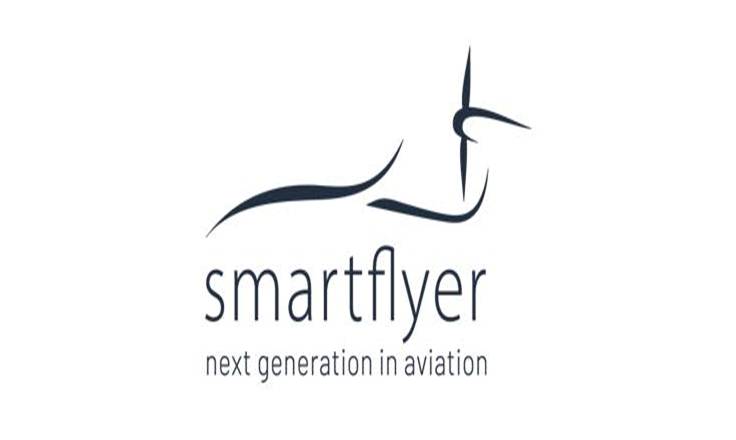Last week, we reported on the planned flight from Hartford, Connecticut and back in a Pipistrel Alpha Electro. Lafayette College student Remy Oktay devise a clever way to recharge the airplane along the way, enlisting a small fleet of Ford F-150 Lightning pickups to charge the small craft. Remy managed to fly over the school’s football game that weekend, something even Super Bowl fans won’t necessarily see. The scheme worked exceedingly well. as reported by the school newspaper and repeated here. Jenny Davis did an admirable job of reporting on a complex project. Remy Oktay ‘24 sets world record flying electric airplane Jenny Davis, Assistant News Editor|November 18, 2022 Remy Oktay ’24 plans to fly an electric airplane over the Rivalry game, a first-of-its-kind feat. (Photo courtesy of Lafayette Gets Electric) With the help of Lafayette students, electric vehicle enthusiasts, pilots and environmental advocates, Remy Oktay ’24 set a world record this past weekend by traveling interstate with an electric airplane that was …
Using Ford F-150 Lightnings to Charge a Pipistrel Alpha Electro
Using Ford F-150 Lightning pickups to charge a Pipistrel Alpha Electro will enable spectators at the Lafayette College-Lehigh football game to see an electric airplane flyover. Remy Oktay wants to perform at his school’s football game, and needs to fly the craft from Hartford, Connecticut to the game in Easton, Pennsylvania. Bringing Your Own Charging Stations Recent attempts to fly reasonably long distances with electric airplanes have shown a few limitations. Aside from the self-recharging craft like Solar Impulse or the Raymonds’ Solar-Flight Duo, planes with rechargeable batteries cannot go far without needing a compatible charger. We reported on several of these distance flight, noting the accommodations each made to fly beyond their home fields. Gabriel DeVault made a California outing into a search for viable charging station. Friend Bob Mackey flew a Maule along the route, carrying a charger to keep Gabriel’s eGull going. A Swiss team flew to the North Sea, with chase cars lugging their charging gear …
Evolito and ElectroFlight
A Profusion of Names Evolito is the new name for YASA motors that fly. YASA (Yokeless and Segmented Armature) motors are a product of Oxford University research, and have become a wholly-owned subsidiary of Mercedes-Benz. Mercedes is now creating and marketing a line of electric vehicles using the YASA motors. But what of aeronautical applications? With that in mind, Mercedes spun out Evolito, taking YASA skyward with “high-power density, light-weight electric motors and controllers for aerospace applications.” Evolito’s Managing Director, Gareth Morris, explains, “We’re building the future of electric flight with motors that have the highest power and torque densities in class with the ability to manufacture at scale, whilst achieving efficiencies of over 98%.” Although their web site claims the YASA configuration is a “revolutionary new approach” to motor design, it’s a careful revamping of the axial flux technology invented almost 40 years ago by Cedric Lynch, a self-taught English inventor. Evolito’s axial-flux motors contain significant improvements. Two motors …
Following the Money to Green Flight
The path to green flight is paved with money. In our transactional world, good ideas are sometimes rewarded with filthy lucre, even if those ideas are intended to clean up a besmirched world. Several examples of clean aviation attracting solid investments follow, along with some stumbling on unexpected obstacles. Jetson ONE For a flying machine lighter than most of its prospective pilots, the Jetson ONE has attracted a host of followers, including the host of a late-night chat show. Besides receiving 3,000 purchase requests in two months the firm has sold its initial production runs for 2022 and 2023. At $92,000 a unit, 100 craft in the first year would net $9.2 million, enough to finance the simple assembly and fabrication of the machines. A $22,000 deposit would discourage idle gawkers, although Internet views exceed 14 million. Keeping it simple allows reasonable progress to the next level. Opener Blackfly Opener claims over 36,000 flight hours in 5,000 operations for …
Hydrogen Capsules for Swappable Energy
Hydrogen capsules, quickly swappable and motor pods easily switched on a long wing share a common theme. H2-Mobile, a French web site, shared three stories that share forms of encapsulation, one pointing back to a story your editor wrote about a decade ago. An HUV (Hydrogen Utility Vehicle) from NamX A French-Moroccan company, NamX showed a car co-developed with Pininfarina, and the sleek sedan reportedly can hit 294 kilometers per hour (182 mph) and accelerate from zero to 100 kilometers per hour (62 mph) in 4.3 seconds. Most surprising, perhaps is the car’s method of storing energy. Michael Torregrossa, writing in H2-Mobile, reports that, “Present for the first time at the Paris Motor Show, NamX lifts the veil on its NAMX hydrogen capsule distribution device. Called CapXtores, this new network will begin its deployments in 2024.” Seemingly a larger version of a capsule battery distribution system created for Gogoro, a Taiwanese scooter manufacturer, the NamX concept car can be refueled …
SABERS – Solid State Batteries Designed for Aircraft
SABERS (Solid-state Architecture Batteries for Enhanced Rechargeability and Safety) is NASA’s approach to making batteries lighter, safer, hold more energy, and (we hope) be ready soon for flight. In fact, SABERS batteries are intended specifically to meet the challenges of aircraft applications. NASA TV reports, “Instead of housing each battery cell inside its own steel casing, as liquid batteries do, all the cells in SABERS battery can be stacked vertically inside one casing. SABERS can do 500 Watt-hours per kilogram, double that of an electric car.” Rocco P. Viggiano, one of the program’s researchers, explains, “Not only does this design eliminate 30 to 40 percent of the battery’s weight, it allows us to double or even triple the energy it can store, far exceeding the capabilities of lithium-ion batteries that are considered state of the art.” NASA points out, “Unlike liquid batteries, solid-state batteries do not catch fire when they malfunction and can still operate when damaged, making them attractive …
Kittyhawk to Close Doors, Open Another
While Eviation’s Alice is drawing adulation for its initial test flight, Kittyhawk, a one-time front-runner and pioneer is quietly closing down. A vision of Larry Page, Sebastian Thrun, and Ilan Kroo, Kittyhawk brought us several approaches to personal green flight, with a heavy emphasis on intuitive control and automated flight. One of its many approaches lives on, though, through sister company Wisk. Blooper Reel Kittyhawk’s earlier efforts look somewhat like an aeronautical blooper reel, one of those montages of early flying machines that evoke laughs when shown as preludes to more serious stuff in movie theaters. Kittyhawk, though, avoided crashes and humiliation. The firm explains its history: “Kittyhawk was founded in 2010 by autonomous car pioneer Sebastian Thrun with the backing of Google co-founder Larry Page to explore the frontier of then-new eVTOL aviation.” From Zee to Kittyhawk Originally founded as Zee Aviation, Kittyhawk was secretive, with only glimpses of its potential aerial vehicles surfacing as “spy shots.” The ZP-1 …
Eviation’s Alice Flies
Eviation’s Alice flew today, a long-awaited event that might mark a new direction for regional aviation. Alice has undergone extensive redesign and a restructuring of its business management team in the last year, but the new airplane finally took to the air. It’s taken long enough that even a late-show host took pot-shots at it in singularly lame fashion. Corden and his writers can do better. Despite the jibes, and following a somewhat traumatic development period, during which an early prototype was heavily damaged by fire in a ground charging accident. Eviation moved ahead. The firm moved operations from Israel to Arlington, Washington, within 15 miles of Everett-based motor maker MagniX. There, the new design underwent construction, followed by motor runups and taxi tests. After lengthy motor runs, Eviation moved operations to Moses Lake, Washington, where it began high-speed taxi texts. Flying magazine reports on its first test flight. “After months of ground testing and anticipation, Eviation’s sleek, electric airplane …
Hydrogen from Thin Air?
Extracting “green” hydrogen from thin air may be a saving grace in attempts to produce clean energy. Normally, water splitting to produce oxygen and hydrogen requires large amounts of preferably pure water, a rare substance in much of the world. Science News headlines its article, “To overcome the water shortage problem in the case of widespread deployment of hydrogen production, a team of researchers from Australia, the United Kingdom and China has demonstrated a method of producing high purity hydrogen from the air by using hygroscopic electrolyte soaked in a porous medium as the moisture absorbent.” GreenCarCongress notes researchers at [The University of] Melbourne have demonstrated a way to extract hydrogen directly from air via the capture of freshwater using “a hygroscopic electrolyte and subsequent electrolysis powered by solar or wind.” Pulling water from the air to perform water splitting could be a daunting prospect, but researchers found they could squeeze sufficient amounts from air with as low as four …
Smartflyer Moves, Along with Former Namesake Fly-in
Smartflyer is a four-passenger, proof-of-concept light aircraft that can fly on pure electric power, as a hybrid with an av-gas powered generator, or as a hydrogen-fuel-cell-driven airplane. It’s been under development for several years, but is moving production to Stelzach – just nearby. Likewise, the Smartflyer Challenge, an electric aircraft fly-in, is moving from Smartflyer’s Grenchen, Switzerland home to Bern, a much larger field about 20 miles south. The Smartflyer SFX1 Electric-Flight.eu reports, “The fuselage of the Smartflyer SFX1 is slowly taking shape.” Company founder Rolf Stuber OK’d production of the first carbon fiber reinforced plastic (CFRP) fuselage at Aerolite near Lucerne. In a rented hall of 500 square meters (5,382 square feet), the “ready-to-install” drivetrain, consisting of a well-tested Rotax 914 engine coupled to a YASA generator, workers will assemble the major components. The SFX1, due to fly next year, has the following specifications: Cruise Speed: 120 knots / 222 km/h (138 mph) Take off Power: 160 kilowatts (214.5 …

